By Randy Scholfield, TU communications director for the Southwest.
When he started making split-cane bamboo rods 40 years ago, Mike Clark had no idea he could make a living from his hobby.
“I built them to satisfy my fishing interests,” he says.
Then, one day, a man wandered into his heated garage workshop and asked to buy one of his rods. He offered to pay $250 for it, which kind of blew Mike away.
“I thought, ‘Wow, I can actually sell these?’”
That was 40 years ago, and Mike Clark has been steadily making traditional bamboo rods—and amassing a legendary reputation for craftsmanship—ever since. His South Creek Ltd. cane rods now sell for thousands of dollars, and there’s a long waiting list.
From his workshop in downtown Lyons, Colo.—a comfortable, rustic space filled with displayed rods and the tools of his trade—Mike makes handcrafted rods, about 40 of them a year. He estimates that he’s made more than 1,000 rods in his career.
A few years ago, there was so much demand that he had a five-year waiting list—that’s right, five years. Mike stopped taking orders for several years just to catch up.
The good news: in 2012, he started taking orders again. Almost immediately, he had more than 80 orders to fill.
He’s tried to find ways to speed up the process and turn out more rods, he says. But it can’t be done—not without sacrificing quality. And he’s not about to do that.
He’s one of those craftsmen for whom tradition means doing things the right way. No shortcuts.
Why bamboo? “It’s natural. It’s simple. It works,” Mike says. The slower, smoother action appeals to many anglers, as does the allure of tradition: bamboo rods got their start in America before the Civil War and reached a high point in the last century, when Colorado rod manufacturers such as Granger, Wright-McGill and Phillipson produced high-end cane rods that are still prized by collectors.
With his finger, he traces the grain down—each grain line is straight as an arrow and matches the grain on the next piece, all down the rod length. You won’t find that on machined rods, he says, where the grain oftectun veers out of alignment. Under stress, that piece can pop out. Hand-planing throughout the process gives the rods more uniform strength and stability.
Mike has designed his rods in the popular taper style of those Colorado companies, but he’s taken that tradition to another level with handcrafted details and exceptional finish.
“People are fascinated that someone is still making bamboo rods by hand, not someplace in China,” says Kathy Jensen, Mike’s longtime assistant and office manager. “What Mike is doing here is a 130-year old technology. He’s still making rods the traditional way.”
He starts with culms of Tonkin cane—the strongest and straightest grained bamboo species—stacked and aged for years in his shop. He then splits them and shaves the strips into equilateral triangles tapered down to precise tip dimensions, using metal forms and block planes. It takes a steady arm and good eye.
That’s a key to his craft: unlike the (still very fine) mass-produced bamboo rods on the market, which are machined, he hand planes each rod strip down to exacting specs. Then he glues the strips together into blanks and adds nickel silver hardware, exotic woods and other finishes.
While there are many amateur and professional cane rod builders out there, few of them plane by hand at every step. Instead, they do “rough cuts” with a machine and then finish planing by hand.
Mike allows that you can make very good rods that way, but the difference of a true custom rod is in the details.
He shows me one of his rod sections. With his finger, he traces the grain down—each grain line is straight as an arrow and matches the grain on the next piece, all down the rod length. You won’t find that on machined rods, he says, where the grain often veers out of alignment. Under stress, that piece can pop out. Hand-planing throughout the process gives the rods more uniform strength and stability.
For Mike, “custom” also means designing rods to the exact specifications of each angler. He likes to spend time with them to learn their casting styles and fishing preferences. “I can tweak a taper for them,” depending on their individual needs. He also follows their lead on aesthetic finishes and materials, from choosing the color of silk threads to adding ivory with scrimshaw or jade reel seats and diamond inlays.
He makes clear, though, that he’s primarily interested in making great fishing tools, not art pieces—he wants his customers to fish with his rods, not hang them on a wall.
Over the years, he’s slowly built his business, largely through word of mouth. He’s friends with local fly-fishing author John Gierach, who has written about South Creek rods and put his own name on a couple of signature rods. He also sells the flies of another famous friend—A.K. Best.
That cachet has attracted bamboo buyers from around the world, including celebrities like guitarist and fly-fishing enthusiast Eric Clapton, whose letter of thanks for a rod hangs on the wall, among many other testimonials.
While Kathy has made a few rods under his supervision, she wouldn’t feel comfortable putting the South Creek Ltd. name on one of her rods.
“Our clients pay for Mike’s high level of craftsmanship and years of experience—you can’t duplicate that.” It’s one reason why, when Mike retires, the South Creek Ltd. name and business will be retired, too.
While Mike’s not planning to retire any time soon, he’s planning to cut back on the number of rods he makes, to about 30 a year.
“We want to slow down and go fishing a bit,” he says.
He’s devoted to his local water, the St. Vrain, and in recent years has worked with the local Trout Unlimited chapter to raise thousands of dollars to restore the river habitat, which was badly damaged by extreme floods a couple years ago.
“We’re getting our fishery back to health,” he says.
Then he excuses himself to get back to his workbench. He has orders to meet.
For more info on South Creek Ltd. rods, go to www.southcreekltd.com.






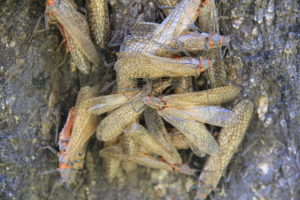 Parking lot to the River - Matching the hatch starts when you park the truck and continue on your way to the water's edge. While not the most appetizing script to read, plastered to your windshield and the grill of your car is a record of the bugs that were flying and hopping along the lake or river that you are planning to fish. The fragile wings of mayflies and sturdy grasshopper legs act like braille to the astute angler and are the first clues as to what flies they might fish that day. As you leave the parking lot and work your way down to the water, observe what is hopping and flying around you. Grasshoppers frantically leaping off the trail ahead of you, the wayward beetle landing on your shoulder, and the shrilling of the cicada, and caddis flies stirring into flight as you push through streamside trees are all indicators of food that might be falling or landing on the water.
Parking lot to the River - Matching the hatch starts when you park the truck and continue on your way to the water's edge. While not the most appetizing script to read, plastered to your windshield and the grill of your car is a record of the bugs that were flying and hopping along the lake or river that you are planning to fish. The fragile wings of mayflies and sturdy grasshopper legs act like braille to the astute angler and are the first clues as to what flies they might fish that day. As you leave the parking lot and work your way down to the water, observe what is hopping and flying around you. Grasshoppers frantically leaping off the trail ahead of you, the wayward beetle landing on your shoulder, and the shrilling of the cicada, and caddis flies stirring into flight as you push through streamside trees are all indicators of food that might be falling or landing on the water.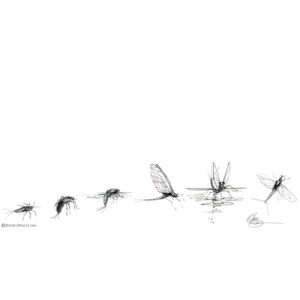 Under the Water - It is beneath the surface of the water that trout do 75% of their feeding, and that's where the angler's most important information will be found. Using an Invertebrate Seine along the streambed and pulling rocks from the current to observe what is holding onto their surface will give you a detailed menu of which bugs are most abundant, as well as their size and color so that you can lay your fly box alongside and choose the closest match.
Under the Water - It is beneath the surface of the water that trout do 75% of their feeding, and that's where the angler's most important information will be found. Using an Invertebrate Seine along the streambed and pulling rocks from the current to observe what is holding onto their surface will give you a detailed menu of which bugs are most abundant, as well as their size and color so that you can lay your fly box alongside and choose the closest match.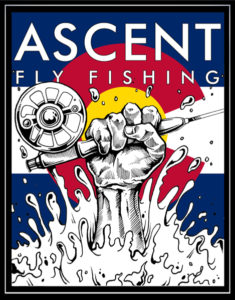
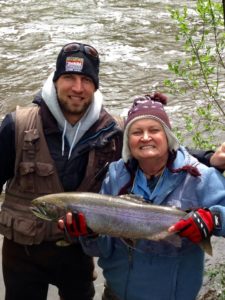 After moving South in the early 1990s I transferred to the Southern Colorado Greenback Chapter of TU. After several years, I was on the Board again, serving mainly in the capacity of Communications Chairman. I will be retiring this year, but plan on maintaining an active role in the chapter. Hubby Paul and I are Life Members, and proud of that.
After moving South in the early 1990s I transferred to the Southern Colorado Greenback Chapter of TU. After several years, I was on the Board again, serving mainly in the capacity of Communications Chairman. I will be retiring this year, but plan on maintaining an active role in the chapter. Hubby Paul and I are Life Members, and proud of that.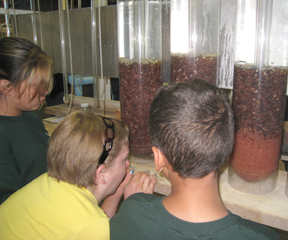 Kids’ education. Several years ago, Jenny Kedward from the local Sierra Club, Pat McGraw, then-President of our Chapter, and I collaborated to do a two-day summer camp program for 12-14 year olds in our community that concentrated on water education and fishing. We conducted it for four years in a row. Our chapter’s Frostbite Fish-Off Tourney, held for several years, is a close second.
Kids’ education. Several years ago, Jenny Kedward from the local Sierra Club, Pat McGraw, then-President of our Chapter, and I collaborated to do a two-day summer camp program for 12-14 year olds in our community that concentrated on water education and fishing. We conducted it for four years in a row. Our chapter’s Frostbite Fish-Off Tourney, held for several years, is a close second.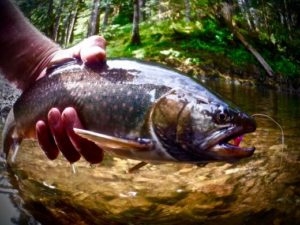 But there is one scenario where tenkara rods really shine, and that is for winter tailwater fishing. Colorado is home to many productive winter fisheries, most located below big dams. Tailwaters include the Blue River below Dillon Reservoir, the Frying Pan below Ruedi, the Yampa below Stagecoach, and the Taylor, to name a few. What these waters have in common is a steady flow of (relatively) warm water flowing all winter that is conducive to insect hatches, and in turn to feeding fish. Waters like this are justifiably famous for the big trout they produce, but fishing them during the high season usually means casting right beside many others doing the same thing. The nice thing about visiting them in the winter when everyone else is on the slopes, or inside nice and warm and dreaming of April, is that you can often have these normally busy waters all to yourself.
But there is one scenario where tenkara rods really shine, and that is for winter tailwater fishing. Colorado is home to many productive winter fisheries, most located below big dams. Tailwaters include the Blue River below Dillon Reservoir, the Frying Pan below Ruedi, the Yampa below Stagecoach, and the Taylor, to name a few. What these waters have in common is a steady flow of (relatively) warm water flowing all winter that is conducive to insect hatches, and in turn to feeding fish. Waters like this are justifiably famous for the big trout they produce, but fishing them during the high season usually means casting right beside many others doing the same thing. The nice thing about visiting them in the winter when everyone else is on the slopes, or inside nice and warm and dreaming of April, is that you can often have these normally busy waters all to yourself.


